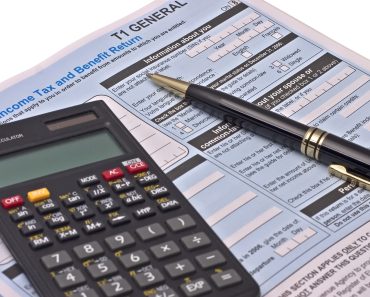 To assist Canadians in saving for retirement, the Registered Retirement Savings Plan (RRSP) was created. It’s a versatile and tax-favored investment choice that can assist you in reaching your monetary objectives and securing a pleasant retirement.
To assist Canadians in saving for retirement, the Registered Retirement Savings Plan (RRSP) was created. It’s a versatile and tax-favored investment choice that can assist you in reaching your monetary objectives and securing a pleasant retirement.
It’s never too late to start making contributions to an RRSP if you don’t already. You can still benefit from an RRSP and strive toward a stable financial future whether you are in your 20s, 30s, 40s, or later. It’s never too late to start, but the earlier you begin, the more time your assets have to grow.
So why should you think about making RRSP contributions? This blog post will go over the different benefits of RRSPs, like as tax savings, chances for investment development, and access to money for significant life costs. We’ll also address frequently asked issues regarding RRSPs, such as how they operate, how much tax savings they can provide, and what happens to the funds in an RRSP after retirement.
Continue reading to find out more about RRSPs and why they’re a wise choice for investments if you’re prepared to take charge of your financial destiny.
What is RRSP and how it works?
A Registered Retirement Savings Plan (RRSP) is a type of savings account created especially for Canadians to use for retirement planning. It offers tax advantages and the chance for long-term savings growth.
The process is as follows: you make a contribution to your RRSP, which can then be invested in a variety of things, including bonds, equities, exchange-traded funds (ETFs), mutual funds, and stocks. You can reduce your taxable income in the year you make an RRSP contribution because those payments are tax deductible.
You won’t have to pay taxes on any capital gains, dividends, or interest until you withdraw the money from the RRSP because your investments within the RRSP grow tax-free. The money you take out of your RRSP is taxed as income.
You must have earned income, be a Canadian resident, and have a current Social Insurance Number in order to be eligible to contribute to an RRSP (SIN). The amount you can put into an RRSP each year is subject to limits set by the Canada Revenue Agency (CRA). If you haven’t reached your maximum contribution limit in prior years, you might be able to make up the difference and contribute more in subsequent years.
An RRSP, or Registered Retirement Savings Plan, is a versatile and tax-advantaged savings tool that can assist you in reaching your retirement goals and securing your financial future. An RRSP is a worthwhile investment choice to think about whether you’re just beginning to save for retirement or already have a strong savings strategy in place.
How much does an RRSP reduce your taxes?
Your ability to pay less tax in the year you make a contribution is one of the main advantages of contributing to an RRSP. Your RRSP contribution is deducted from your taxable income, allowing you to pay less in taxes as a result.
Your marginal tax rate, the amount you donate, and your province or territory of residency are some of the variables that will determine how much money you will actually save on taxes. You will often save more money on taxes thanks to your RRSP contribution the higher your tax rate is.
Let’s use an example where you live in Ontario and your marginal tax rate is 45%. If you make a $10,000 RRSP contribution, your taxable income will also be $10,000 lower, saving you $4,500 in taxes.
It’s crucial to remember that while you will benefit from a tax break in the year you make the contribution, you will also be required to pay taxes on any future withdrawals of money from your RRSP. The tax benefits you obtain now may be outweighed by the possibility of increased savings and a larger retirement nest egg in the future as the purpose of an RRSP is to invest your money and build your wealth over time.
Overall, making RRSP contributions can result in significant tax savings and lower your overall tax burden. An RRSP is a useful savings tool for anyone trying to create a stable financial future since it allows users to select from a wide range of investment alternatives.
What are 3 benefits of a RRSP?
A multitude of advantages are available with an RRSP to assist you in securing your financial future and achieving your retirement savings goals. Here are the top three advantages of an RRSP:
Tax savings
You can reduce your taxable income in the year you make a contribution to your RRSP since, as was already noted, RRSP payments are tax deductible. You may be able to significantly lower your overall tax liability as a result of this.
Investment growth
With an RRSP, you have the choice to put your money in a range of securities, including equities, bonds, mutual funds, and exchange-traded funds (ETFs). Within an RRSP, your investments grow tax-free, which can aid in the long-term growth of your funds.
Flexibility
An RRSP is a flexible savings option that enables you to pick the investments that are most compatible with your objectives and risk tolerance. As you are able, whether it be on a regular basis or in one single payment, you can also contribute. Additionally, you can revise your investment or RRSP contribution amounts as necessary if your financial condition changes.
These three advantages are just a few of the numerous ones an RRSP provides. An RRSP is a useful investing instrument that can help you reach your objectives, regardless of whether you’ve only recently begun to consider retirement or are well on your way to developing a sound savings strategy.
What is the biggest benefit of RRSP?
It might be difficult to gauge which benefit is the greatest when it comes to RRSP advantages. After all, the tax benefits, investment growth, and flexibility provided by an RRSP are all noteworthy advantages that can aid you in achieving your retirement savings objectives.
The strength of tax-free investment growth, however, would be our top pick if we had to pick just one advantage above the others.
Your assets grow tax-free when you have an RRSP, which can have a big long-term influence on your retirement funds. Your RRSP’s value will rise as a result of the growth of your investments, which can aid in the development of a larger retirement nest egg.
When paired with the other advantages of an RRSP, such as tax savings on contributions and the freedom to select the investments that best suit your goals, this tax-free growth is very potent.
So, even though an RRSP has numerous advantages, the opportunity to profit from investment growth that is tax-free is undoubtedly one of the most important ones. An RRSP is a useful tool that can assist you in achieving your objectives and creating a stable financial future, whether you are just beginning to prepare for retirement or have been doing so for some time.
Can I cash out my RRSP?
Is it feasible to access the funds in an RRSP before retirement? is a popular query regarding RRSPs. The answer is yes, but there are a few guidelines and limitations to remember.
You have the choice to withdraw money from your RRSP if you require access to it before retirement. However, by doing so, taxes will be due on the amount withdrawn, and there can also be further fines and fees.
It’s also important to keep in mind that cashing out your RRSP will cause you to close the account if you’re under 71 years old. This implies that you will forfeit future tax savings opportunities as well as the advantages of investment growth that is tax-free.
Therefore, even though it is feasible to cash out your RRSP, it is crucial to thoroughly weigh the ramifications before doing so. It would be worthwhile to consider other choices, such as taking out a loan or selling investments outside of your RRSP, if you need to access your resources before retiring.
Ultimately, keeping your money invested and growing until you’re ready to retire is the greatest approach to fully benefit from an RRSP. By doing this, you can benefit from tax-free investment growth and the potential for large tax savings at crucial times.
What happens to the money in an RRSP when you retire?
Your RRSP becomes an income source to aid you during your golden years after you reach retirement. Your RRSP money can be accessed in a number of ways, each having advantages and disadvantages that should be considered.
You can take a lump sum distribution from your RRSP as one choice. This allows you rapid access to your funds, but it also means that you’ll have to pay taxes on the entire amount, which can be a lot.
Changing your RRSP into a Registered Retirement Income Fund is an additional choice (RRIF). You can receive a consistent income from your savings through an RRIF, and the payments will be taxed as such. The capacity to better manage your tax obligations in retirement will come from having more control over the quantity and timing of your income.
A third choice is to use the money in your RRSP to buy an annuity, which offers a lifetime income guarantee. This choice provides the security of a steady income source, but it might not have as much flexibility as an RRIF.
The best option for you will ultimately depend on your specific requirements, objectives, and tax status. To make an informed choice about your RRSP in retirement, it’s crucial to weigh all of your alternatives and seek professional counsel.
Regardless of which choice you select, the funds in your RRSP can be a key source of security and income in your later years, enabling you to live a pleasant and secure retirement.
Why It’s Never Too Late to Start Contributing to an RRSP
A lot of people think it’s too late for them to start saving for retirement since they either missed the boat or have other financial priorities. But the truth is that it’s never too late to start making contributions to an RRSP and benefiting from all the advantages it provides.
The ability to use your savings to lower your taxable income is one of the main advantages of an RRSP. As a result, your tax liability will be lower today, giving you more money to invest and increase your savings.
An further benefit of an RRSP is that your savings can increase tax-free, deferring taxes on any investment gains until you remove the funds. By doing this, you can gradually raise the size of your nest egg and boost your ability to retire comfortably.
The fact that many firms match employee contributions to workplace RRSPs should not be overlooked, to sum up. By utilizing the free money provided by your employer, you can increase the amount of money you save.
In other words, there is never a bad time to start making RRSP contributions. An RRSP can offer significant tax advantages, tax-free investment gains, and financial security in your later years whether you are just starting out in your career or are already well into retirement. then why wait? Take charge of your financial future by starting to make RRSP contributions right away!
Don’t Miss Out on the RRSP Deadline: Get Up to $3,000 to Start Your Investments with Wealthsimple
If you’re considering contributing to an RRSP, it’s important to act fast: the deadline to contribute for the current year is almost here, on February 28th.
If you don’t have an RRSP account yet, Wealthsimple is an excellent choice. They offer some of the lowest fees on their managed accounts, and there are no fees at all on their DIY accounts. And now, for a limited time, you can get up to $3,000 to start your investments when you sign up with Wealthsimple.
Wealthsimple offers a variety of low-cost, ethical investment solutions, making it simple to get started. Additionally, you may manage your investments whenever and wherever you want thanks to their user-friendly online platform and app.
So don’t wait if you want to expand your retirement savings and take advantage of the many benefits of an RRSP. Visit Wealthsimple right away to take advantage of this brief promotion and receive up to $3,000 to begin investing. And remember: the RRSP deadline is fast approaching, so act now to ensure you don’t miss out!







